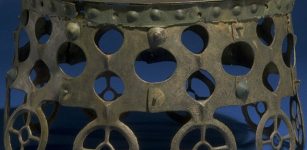Neanderthals And Modern Humans Diverged At Least 800,000 Years Ago
Conny Waters - AncientPages.com - Neanderthals and modern humans diverged at least 800,000 years ago, substantially earlier than indicated by most DNA-based estimates, according to new research from the UCL.
The research shows that the teeth of hominins from Sima de los Huesos, Spain – ancestors of the Neanderthals – diverged from the modern human lineage earlier than previously assumed.
 Sima de los Huesos hominins are characterized by very small posterior teeth (premolars and molars) that show multiple similarities with classic Neanderthals. Credit: Dr Aida Gomez-Robles
Sima de los Huesos hominins are characterized by very small posterior teeth (premolars and molars) that show multiple similarities with classic Neanderthals. Credit: Dr Aida Gomez-Robles
Sima de los Huesos is a cave site in Atapuerca Mountains, Spain, where archaeologists have recovered fossils of almost 30 people. Previous studies date the site to around 430,000 years ago (Middle Pleistocene), making it one of the oldest and largest collections of human remains discovered to date.
“Any divergence time between Neanderthals and modern humans younger than 800,000 years ago would have entailed an unexpectedly fast dental evolution in the early Neanderthals from Sima de los Huesos,” Dr Aida Gomez-Robles (UCL Anthropology), said in a press release.
“There are different factors that could potentially explain these results, including strong selection to change the teeth of these hominins or their isolation from other Neanderthals found in mainland Europe. However, the simplest explanation is that the divergence between Neanderthals and modern humans was older than 800,000 years. This would make the evolutionary rates of the early Neanderthals from Sima de los Huesos roughly comparable to those found in other species.”
Modern humans share a common ancestor with Neanderthals, but how and when they diverged are a matter of intense debate within the anthropological community. Ancient DNA analyses have generally indicated that both lineages diverged around 300,000 to 500,000 years ago, which has strongly influenced the interpretation of the hominin fossil record.
This divergence time, however, is not compatible with the anatomical and genetic Neanderthal similarities observed in the hominins from Sima de los Huesos. The Sima fossils are considered likely Neanderthal ancestors based on both anatomical features and DNA analysis.
“Sima de los Huesos hominins are characterized by very small posterior teeth (premolars and molars) that show multiple similarities with classic Neanderthals, Dr Gomez-Robles said.
"It is likely that the small and Neanderthal-looking teeth of these hominins evolved from the larger and more primitive teeth present in the last common ancestor of Neanderthals and modern humans.”
Dental shape has evolved at very similar rates across all hominin species, including those with very expanded and very reduced teeth.
“The Sima people’s teeth are very different from those that we would expect to find in their last common ancestral species with modern humans, suggesting that they evolved separately over a long period of time to develop such stark differences.”
The study has significant implications for the identification of Homo sapiens last common ancestral species with Neanderthals, as it allows ruling out all the groups postdating 800,000 year ago.
Written by Conny Waters – AncientPages.com Staff Writer




















